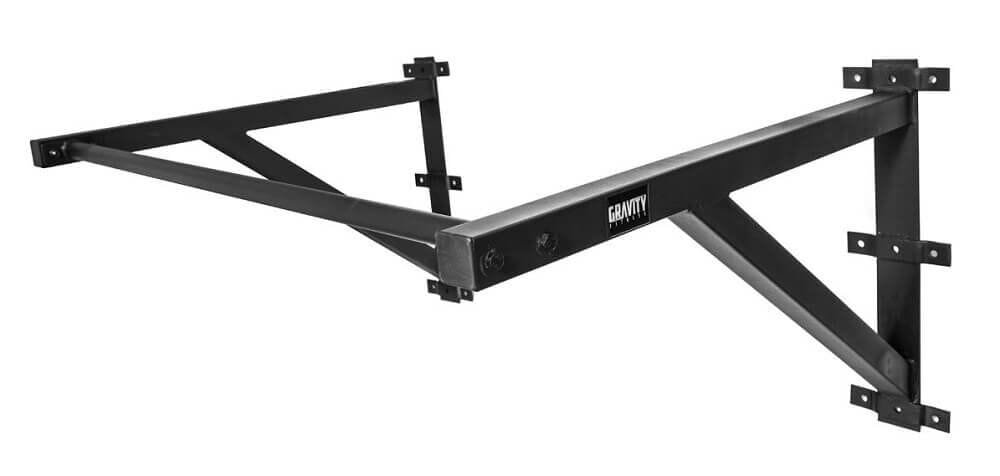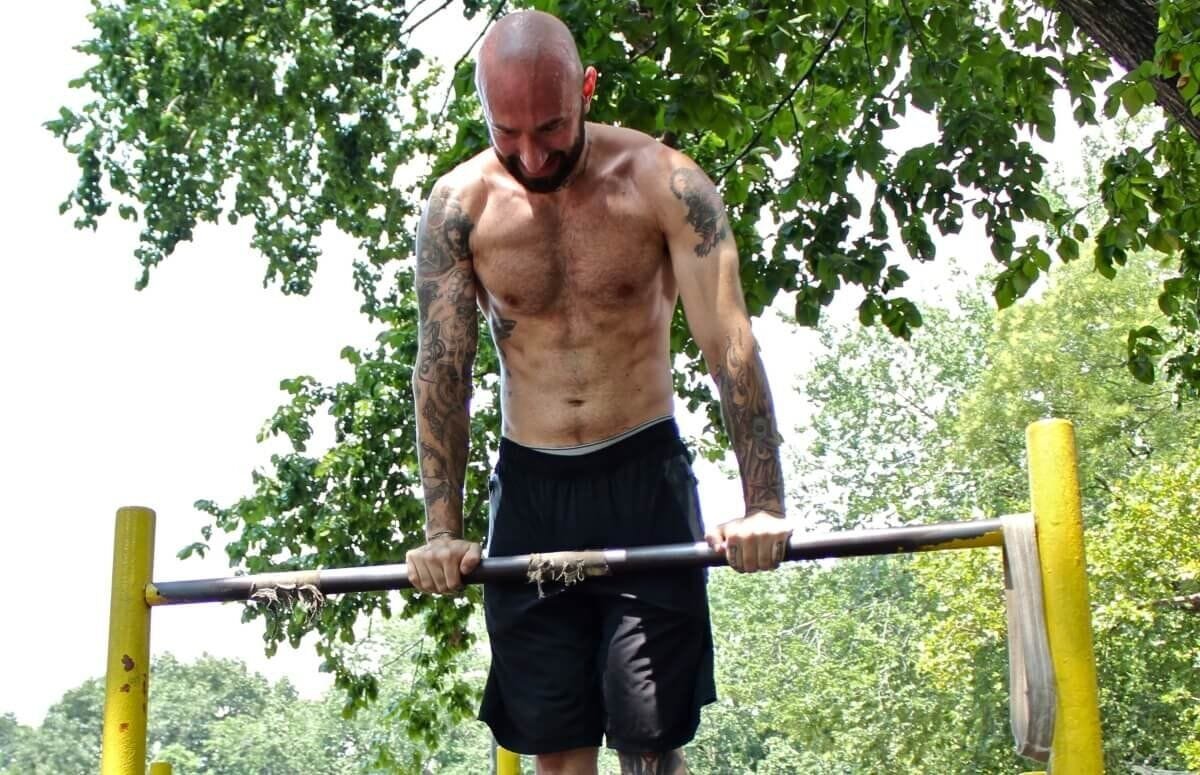One of the most sought after bodyweight skills is the Muscle-Up – a skill that requires great strength to be able to pull yourself up and over the bar – so it’s understandable that many people looking to buy a pull-up bar will want to make sure that the bar they purchase is also appropriate for training muscle-ups on.
In this post, we’re going to list the different pull-up bars available to you which are suitable for performing muscle-ups on and help you choose which of the pull-up bars are the most suited for you.
Table of Contents
Struggling to perform a Muscle-Up?
Watch this video first! Learn from Thenx pro Chris Heria on how to master the muscle-up below:
Which pull-up bars are suitable for performing muscle-ups on?
There are many different types of pull-up bars out there, but not every bar can be used for performing muscle-ups on.
For example, a doorframe pull-up bar is not a viable option for muscle-ups, as it is impossible to use this kind of bar for any exercise which requires your bodyweight to be above the bar.
Of course, if you tried to do this, you’d simply hit your head on the top of the doorframe!
So, what factors do we need to take into consideration?
There are two important factors we need to take into consideration; the available space above and around the bar, and the stability of the pull-up bar when carrying out movements that are less-strict and may include swinging movements.
Let’s dive into the available space first…
How much space do I need above and around the pull-up bar?
The Muscle-Up consists of three key parts:
- The Pull-Up: Pulling your weight up to the bar from a dead hang
- The Transition: Transitioning your weight from beneath the bar until it is over the bar
- The Dip: Pushing up once over the bar until your arms are fully extended
There are several assumptions we can make about the space needed using the movements described above.
The bar needs to be positioned at a height which is ideally around 10-30cm higher than your reaching height; that is from the floor to your palms if you are standing straight with your arms above your head.
There needs to be enough clearance above the bar to accommodate you at the top of the muscle-up. This is at least the distance from the top of your head to your palms when your arms are hanging down by your sides.
Ideally the more height you have above this figure, the more confident you will be that you won’t hit your head. Also, as you progress with calisthenics you may wish to have extra clearance space for more freestyle moves (when you get to that level!).
To transition above the bar, you must first get around it. Rather than thinking of the muscle-up movement as a linear movement upwards, you should instead think of this movement as a ‘C’ type shape where your centre of mass moves around the bar.
This means that you will need enough space either side of the bar to accommodate slight momentum in front and behind the bar. I’d recommend this to be half of your height.
A free-standing pull-up bar should be able to accommodate this, however, only certain wall-mounted and ceiling-mounted pull-up bars will be suitable here.
Why does the pull-up bar need to be stable for muscle-ups?
As described already above, there is a slight amount of momentum required when performing a muscle-up.
If your Muscle-Up technique is exceptionally clean, then this momentum may be very minor. For those new to the Muscle-Up, you will inevitably rely on a lot of swinging to complete the exercise.
This swinging motion can make performing Muscle-Ups much more difficult if using a pull-up bar which isn’t very stable. Not only that, but a lack of stability in the bar can be very concerning to the user and could even be a potential health hazard if the bar may collapse or fall over.
Bars that are fixed in place; either on the ground or to a wall or ceiling are typically much more stable than free-standing bars, though free-standing bars have much less limitation.
Which is the best pull-up bar for muscle-ups?
Check out the recommended options below, ensuring you consider the advantages and disadvantages of each bar based on your own specific needs.
#1. Mirafit Heavy Duty Olympic Power Cage
The Mirafit Olympic Power Cage is a heavy duty piece of equipment that can be bolted down to the floor in order to make it the sturdiest pull-up frame you can buy, short of buying a commercial level rig.
You’ll need plenty of space with this power cage though as the product dimensions are 1.23m (w) x 1.42m (d) x 2.17m (h). If you’re 6ft you’ll want at least 3m of available ceiling height to be able to comfortably perform a muscle-up on the Mirafit power cage, maybe more.
The Mirafit power cage is one of the more expensive calisthenics items on the market, but it can be used for a variety of different workouts. You should have no problem hanging a pair of gymnastic rings off of the top bar and the power cage also comes with dip bars to further extend the range of exercises you can use the item for. The dip bars are adjustable, allowing you to change the height or even remove them altogether.
The pull-up bar should be able to support up to 180kg, making it a great choice for heavier users, or those who like to train with added weight.
If you’re not a calisthenics purist and also enjoy weight training, then the Mirafit power cage is ideal for holding the barbell for squats and bench press. The cage can support a 7ft barbell up to the weight of 350kg.
#2. Gravity Fitness Heavy Duty Wall Mounted Pull-Up Bar (Best Value)

If you’ve got a wall strong enough to mount a pull-up bar from, then the Gravity Fitness Wall Mounted Pull-Up Bar may be a better alternative choice for practising muscle-ups on. The pull-up bar is more than half the price of the Mirafit Power Cage too, so is a great option for those looking for a much cheaper option.
The Gravity Fitness pull-up bar is one of the only wall-mounted pull-up bars that has been specifically designed for muscle-ups. The bar sits 900mm away from the wall, giving you enough space in front of the bar for a small swing without hitting your legs on the wall.
Gravity Fitness is one of the most prolific calisthenics equipment retailers and is highly rated in Calisthenics 101s buyer guides. They offer a lifetime warranty with many of their products, giving you the assurance that you’re buying a quality product that will last a lifetime.

Founder of www.calisthenics-101.co.uk. Training calisthenics since 2012.
Currently working on: 30 second one-arm handstand, muscle-up 360, straddle planche.
